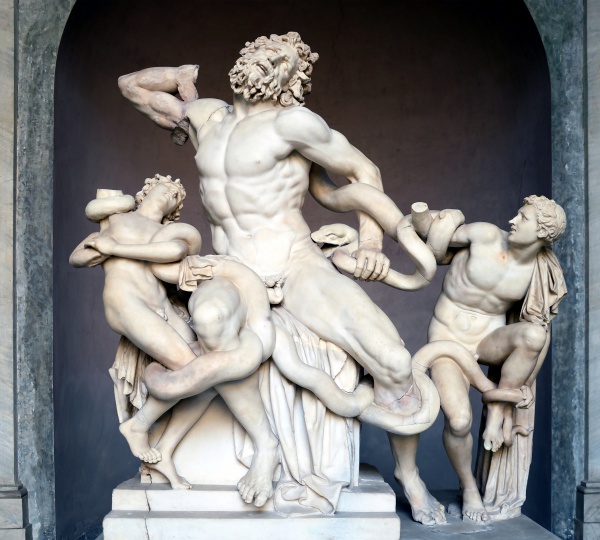Facts About Laocoön and His Sons
The statue of Laocoön and His Sons, also known as the Laocoön Group, is a renowned ancient sculpture that has captivated audiences since its excavation in Rome in 1506. Today, it is displayed in the Vatican Museums. This dramatic piece depicts the Trojan priest Laocoön and his sons ensnared by sea serpents, their faces contorted in agony and their bodies twisted in anguish. The raw emotion captured in the sculpture is both powerful and haunting.
According to Pliny the Elder, the artwork was created by three Greek sculptors from Rhodes: Agesander, Athenodoros, and Polydorus. The statue is a prime example of the Hellenistic baroque style, and some believe it might be a copy of an even older bronze work. While scholars continue to debate its precise origin and date, it is thought that the statue was commissioned by a wealthy Roman, possibly someone from the Imperial family.
Despite losing some parts and undergoing various restorations over the years, the Laocoön Group still stands proudly in the Museo Pio-Clementino within the Vatican Museums. The story behind the statue originates from Greek mythology and is notably featured in Virgil's Aeneid.
When the Laocoön was discovered, it had a profound impact on Italian art, inspiring masters like Michelangelo and Raphael. Copies and adaptations of the sculpture spread throughout Europe, influencing art for centuries. Its artistic significance has been the subject of much debate and analysis, with scholars and artists offering various interpretations over the years.
The statue was found near the Sette Sale baths on the Oppian Hill in Rome, close to the Colosseum. This area was part of the Gardens of Maecenas and possibly belonged to the imperial estate. The discovery of the Laocoön remains a landmark event in art history, inspiring countless artists and prompting ongoing discussions about the nature of artistic expression.

 Vatican
Vatican